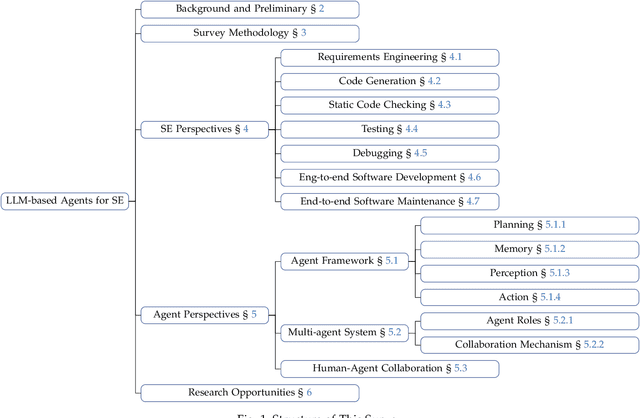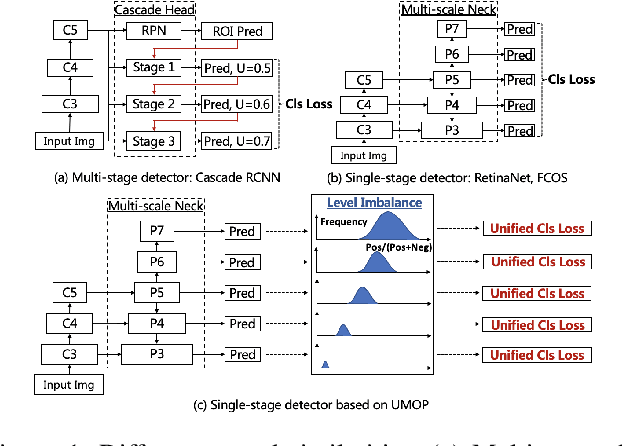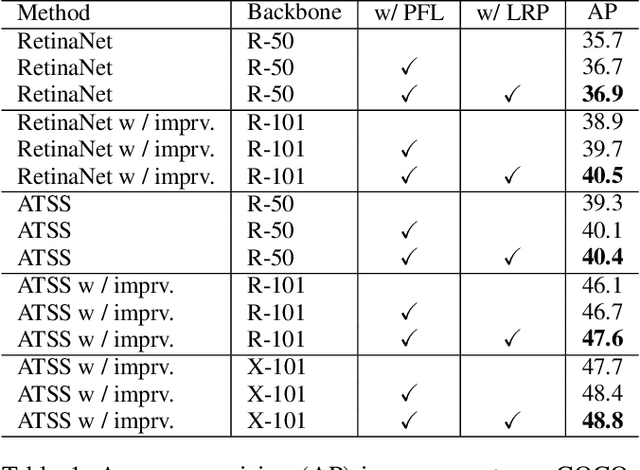Junwei Liu
Can Agents Fix Agent Issues?
May 27, 2025Abstract:LLM-based agent systems are emerging as a new software paradigm and have been widely adopted across diverse domains such as medicine, robotics, and programming. However, maintaining these systems requires substantial effort, as they are inevitably prone to bugs and continually evolve to meet changing external requirements. Therefore, automatically resolving agent issues (i.e., bug reports or feature requests) is a crucial and challenging task. While recent software engineering (SE) agents (e.g., SWE-agent) have shown promise in addressing issues in traditional software systems, it remains unclear how effectively they can resolve real-world issues in agent systems, which differ significantly from traditional software. To fill this gap, we first manually analyze 201 real-world agent issues and identify common categories of agent issues. We then spend 500 person-hours constructing AGENTISSUE-BENCH, a reproducible benchmark comprising 50 agent issue resolution tasks (each with an executable environment and failure-triggering tests). We further evaluate state-of-the-art SE agents on AGENTISSUE-BENCH and reveal their limited effectiveness (i.e., with only 3.33% - 12.67% resolution rates). These results underscore the unique challenges of maintaining agent systems compared to traditional software, highlighting the need for further research to develop advanced SE agents for resolving agent issues. Data and code are available at https://alfin06.github.io/AgentIssue-Bench-Leaderboard/#/ .
Effective Field Neural Network
Feb 24, 2025Abstract:In recent years, with the rapid development of machine learning, physicists have been exploring its new applications in solving or alleviating the curse of dimensionality in many-body problems. In order to accurately reflect the underlying physics of the problem, domain knowledge must be encoded into the machine learning algorithms. In this work, inspired by field theory, we propose a new set of machine learning models called effective field neural networks (EFNNs) that can automatically and efficiently capture important many-body interactions through multiple self-refining processes. Taking the classical $3$-spin infinite-range model and the quantum double exchange model as case studies, we explicitly demonstrate that EFNNs significantly outperform fully-connected deep neural networks (DNNs) and the effective model. Furthermore, with the help of convolution operations, the EFNNs learned in a small system can be seamlessly used in a larger system without additional training and the relative errors even decrease, which further demonstrates the efficacy of EFNNs in representing core physical behaviors.
Global Estimation of Building-Integrated Facade and Rooftop Photovoltaic Potential by Integrating 3D Building Footprint and Spatio-Temporal Datasets
Dec 02, 2024Abstract:This research tackles the challenges of estimating Building-Integrated Photovoltaics (BIPV) potential across various temporal and spatial scales, accounting for different geographical climates and urban morphology. We introduce a holistic methodology for evaluating BIPV potential, integrating 3D building footprint models with diverse meteorological data sources to account for dynamic shadow effects. The approach enables the assessment of PV potential on facades and rooftops at different levels-individual buildings, urban blocks, and cities globally. Through an analysis of 120 typical cities, we highlight the importance of 3D building forms, cityscape morphology, and geographic positioning in measuring BIPV potential at various levels. In particular, our simulation study reveals that among cities with optimal facade PV performance, the average ratio of facade PV potential to rooftop PV potential is approximately 68.2%. Additionally, approximately 17.5% of the analyzed samples demonstrate even higher facade PV potentials compared to rooftop installations. This finding underscores the strategic value of incorporating facade PV applications into urban sustainable energy systems.
Large Language Model-Based Agents for Software Engineering: A Survey
Sep 04, 2024



Abstract:The recent advance in Large Language Models (LLMs) has shaped a new paradigm of AI agents, i.e., LLM-based agents. Compared to standalone LLMs, LLM-based agents substantially extend the versatility and expertise of LLMs by enhancing LLMs with the capabilities of perceiving and utilizing external resources and tools. To date, LLM-based agents have been applied and shown remarkable effectiveness in Software Engineering (SE). The synergy between multiple agents and human interaction brings further promise in tackling complex real-world SE problems. In this work, we present a comprehensive and systematic survey on LLM-based agents for SE. We collect 106 papers and categorize them from two perspectives, i.e., the SE and agent perspectives. In addition, we discuss open challenges and future directions in this critical domain. The repository of this survey is at https://github.com/FudanSELab/Agent4SE-Paper-List.
A Refer-and-Ground Multimodal Large Language Model for Biomedicine
Jun 26, 2024Abstract:With the rapid development of multimodal large language models (MLLMs), especially their capabilities in visual chat through refer and ground functionalities, their significance is increasingly recognized. However, the biomedical field currently exhibits a substantial gap in this area, primarily due to the absence of a dedicated refer and ground dataset for biomedical images. To address this challenge, we devised the Med-GRIT-270k dataset. It comprises 270k question-and-answer pairs and spans eight distinct medical imaging modalities. Most importantly, it is the first dedicated to the biomedical domain and integrating refer and ground conversations. The key idea is to sample large-scale biomedical image-mask pairs from medical segmentation datasets and generate instruction datasets from text using chatGPT. Additionally, we introduce a Refer-and-Ground Multimodal Large Language Model for Biomedicine (BiRD) by using this dataset and multi-task instruction learning. Extensive experiments have corroborated the efficacy of the Med-GRIT-270k dataset and the multi-modal, fine-grained interactive capabilities of the BiRD model. This holds significant reference value for the exploration and development of intelligent biomedical assistants.
ClassEval: A Manually-Crafted Benchmark for Evaluating LLMs on Class-level Code Generation
Aug 14, 2023



Abstract:In this work, we make the first attempt to evaluate LLMs in a more challenging code generation scenario, i.e. class-level code generation. We first manually construct the first class-level code generation benchmark ClassEval of 100 class-level Python code generation tasks with approximately 500 person-hours. Based on it, we then perform the first study of 11 state-of-the-art LLMs on class-level code generation. Based on our results, we have the following main findings. First, we find that all existing LLMs show much worse performance on class-level code generation compared to on standalone method-level code generation benchmarks like HumanEval; and the method-level coding ability cannot equivalently reflect the class-level coding ability among LLMs. Second, we find that GPT-4 and GPT-3.5 still exhibit dominate superior than other LLMs on class-level code generation, and the second-tier models includes Instruct-Starcoder, Instruct-Codegen, and Wizardcoder with very similar performance. Third, we find that generating the entire class all at once (i.e. holistic generation strategy) is the best generation strategy only for GPT-4 and GPT-3.5, while method-by-method generation (i.e. incremental and compositional) is better strategies for the other models with limited ability of understanding long instructions and utilizing the middle information. Lastly, we find the limited model ability of generating method-dependent code and discuss the frequent error types in generated classes. Our benchmark is available at https://github.com/FudanSELab/ClassEval.
Evaluating Instruction-Tuned Large Language Models on Code Comprehension and Generation
Aug 02, 2023



Abstract:In this work, we evaluate 10 open-source instructed LLMs on four representative code comprehension and generation tasks. We have the following main findings. First, for the zero-shot setting, instructed LLMs are very competitive on code comprehension and generation tasks and sometimes even better than small SOTA models specifically fine-tuned on each downstream task. We also find that larger instructed LLMs are not always better on code-related tasks. Second, for the few-shot setting, we find that adding demonstration examples substantially helps instructed LLMs perform better on most code comprehension and generation tasks; however, the examples would sometimes induce unstable or even worse performance. Furthermore, we find widely-used BM25-based shot selection strategy significantly outperforms the basic random selection or fixed selection only on generation problems. Third, for the fine-tuning setting, we find that fine-tuning could further improve the model performance on downstream code comprehension and generation tasks compared to the zero-shot/one-shot performance. In addition, after being fine-tuned on the same downstream task dataset, instructed LLMs outperform both the small SOTA models and similar-scaled LLMs without instruction tuning. Based on our findings, we further present practical implications on model and usage recommendation, performance and cost trade-offs, and future direction.
Coordinated Defense Allocation in Reach-Avoid Scenarios with Efficient Online Optimization
Apr 01, 2023



Abstract:Deriving strategies for multiple agents under adversarial scenarios poses a significant challenge in attaining both optimality and efficiency. In this paper, we propose an efficient defense strategy for cooperative defense against a group of attackers in a convex environment. The defenders aim to minimize the total number of attackers that successfully enter the target set without prior knowledge of the attacker's strategy. Our approach involves a two-scale method that decomposes the problem into coordination against a single attacker and assigning defenders to attackers. We first develop a coordination strategy for multiple defenders against a single attacker, implementing online convex programming. This results in the maximum defense-winning region of initial joint states from which the defender can successfully defend against a single attacker. We then propose an allocation algorithm that significantly reduces computational effort required to solve the induced integer linear programming problem. The allocation guarantees defense performance enhancement as the game progresses. We perform various simulations to verify the efficiency of our algorithm compared to the state-of-the-art approaches, including the one using the Gazabo platform with Robot Operating System.
Fast Online Hashing with Multi-Label Projection
Dec 03, 2022



Abstract:Hashing has been widely researched to solve the large-scale approximate nearest neighbor search problem owing to its time and storage superiority. In recent years, a number of online hashing methods have emerged, which can update the hash functions to adapt to the new stream data and realize dynamic retrieval. However, existing online hashing methods are required to update the whole database with the latest hash functions when a query arrives, which leads to low retrieval efficiency with the continuous increase of the stream data. On the other hand, these methods ignore the supervision relationship among the examples, especially in the multi-label case. In this paper, we propose a novel Fast Online Hashing (FOH) method which only updates the binary codes of a small part of the database. To be specific, we first build a query pool in which the nearest neighbors of each central point are recorded. When a new query arrives, only the binary codes of the corresponding potential neighbors are updated. In addition, we create a similarity matrix which takes the multi-label supervision information into account and bring in the multi-label projection loss to further preserve the similarity among the multi-label data. The experimental results on two common benchmarks show that the proposed FOH can achieve dramatic superiority on query time up to 6.28 seconds less than state-of-the-art baselines with competitive retrieval accuracy.
Progressive Hard-case Mining across Pyramid Levels in Object Detection
Sep 15, 2021



Abstract:In object detection, multi-level prediction (e.g., FPN, YOLO) and resampling skills (e.g., focal loss, ATSS) have drastically improved one-stage detector performance. However, how to improve the performance by optimizing the feature pyramid level-by-level remains unexplored. We find that, during training, the ratio of positive over negative samples varies across pyramid levels (\emph{level imbalance}), which is not addressed by current one-stage detectors. To mediate the influence of level imbalance, we propose a Unified Multi-level Optimization Paradigm (UMOP) consisting of two components: 1) an independent classification loss supervising each pyramid level with individual resampling considerations; 2) a progressive hard-case mining loss defining all losses across the pyramid levels without extra level-wise settings. With UMOP as a plug-and-play scheme, modern one-stage detectors can attain a ~1.5 AP improvement with fewer training iterations and no additional computation overhead. Our best model achieves 55.1 AP on COCO test-dev. Code is available at https://github.com/zimoqingfeng/UMOP.
 Add to Chrome
Add to Chrome Add to Firefox
Add to Firefox Add to Edge
Add to Edge